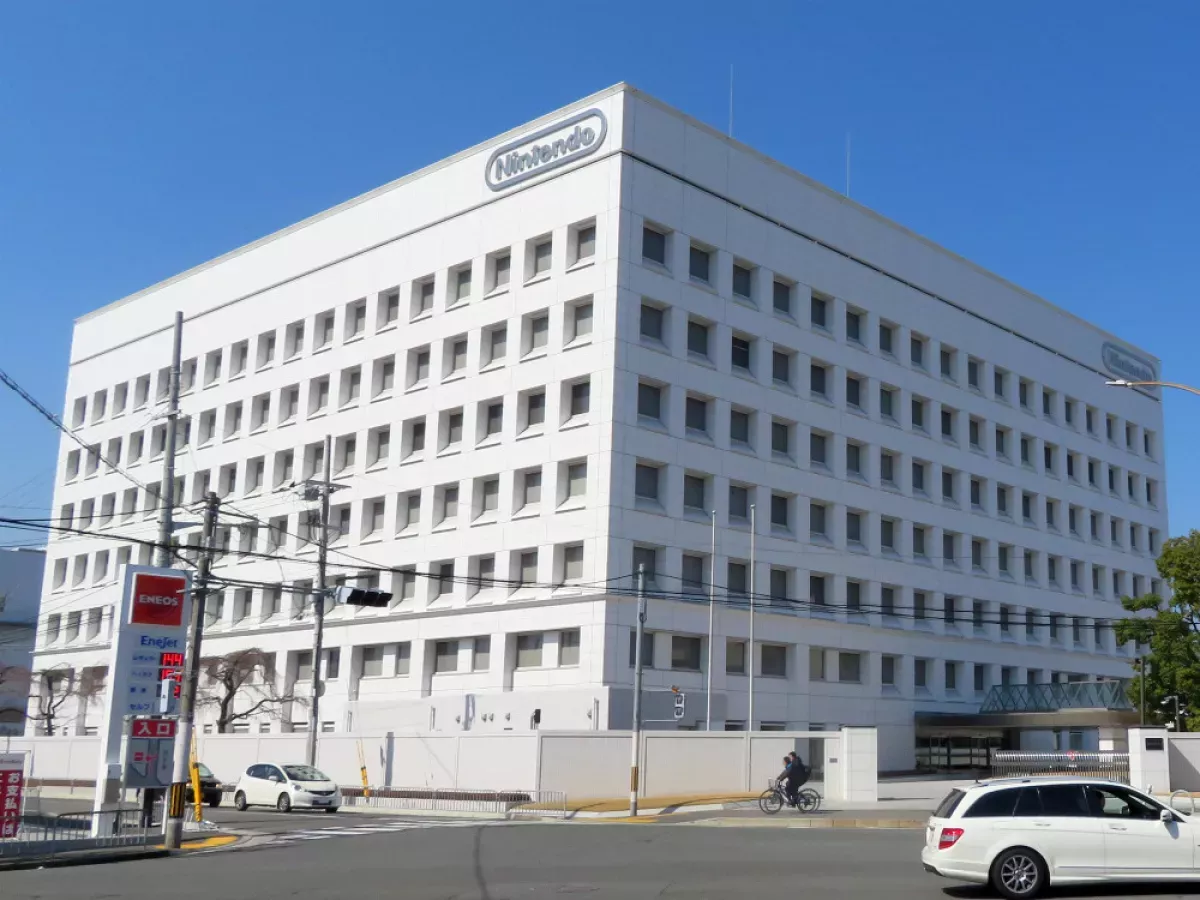Nintendo is a Japanese multinational video game company based in Kyoto. It is involved in the development, publishing, and marketing of video games and video game consoles. The company is known globally for creating iconic franchises such as Mario, Zelda, and Pokémon, and innovative hardware like the Nintendo Switch, Wii, and Game Boy. With a history dating back to 1889, Nintendo has evolved from a playing card manufacturer to a leading force in the video game industry, constantly pushing boundaries and shaping the landscape of interactive entertainment.
1902: First western-style card deck on the market
According to Nintendo, the business' first western-style card deck was put on the market in 1902.
1907: Agreement with Nihon Senbai
In 1907, Nintendo entered into an agreement with Nihon Senbai—later known as the Japan Tobacco—to market its cards to various cigarette stores throughout the country.
1907: Sekiryo Kaneda adopted the Yamauchi surname
In 1907, Sekiryo Kaneda adopted the Yamauchi surname to continue the business after Yamauchi's retirement.
1915: Yamauchi Nintendo Promotional Calendar
A Nintendo promotional calendar from the Taishō era dated to 1915 indicates that the business was named Yamauchi Nintendo but still used the Marufuku Nintendo Co. brand for its playing cards.
1927: Birth of Hiroshi Yamauchi
In 1927, Hiroshi Yamauchi, Sekiryo Kaneda's grandson and eventual successor, was born.
1929: Sekiryo Kaneda headed the business
By 1929, Sekiryo Kaneda headed the business, making Nintendo the largest playing card business in Japan.
1933: Establishment of Yamauchi Nintendo & Co., Ltd.
In 1933, Sekiryo Kaneda established the company as a general partnership named Yamauchi Nintendo & Co., Ltd.
1947: Founding of Marufuku Co., Ltd.
In 1947, Sekiryo founded the distribution company Marufuku Co., Ltd., which was responsible for Nintendo's sales and marketing operations and eventually became Nintendo Co., Ltd.
1950: Hiroshi Yamauchi assumes presidency
In 1950, Hiroshi Yamauchi assumed the presidency of Nintendo.
1951: Name change to Nintendo Playing Card Co., Ltd.
In 1951, Hiroshi Yamauchi changed the company name to Nintendo Playing Card Co., Ltd.
1953: Mass production of plastic playing cards
In 1953, Nintendo became the first company to succeed in mass-producing plastic playing cards in Japan.
1959: Move to new headquarters and partnership with Walt Disney Productions
In 1959, Nintendo moved its headquarters to Kamitakamatsu-cho, Fukuine, Higashiyama-ku in Kyoto, and the company entered into a partnership with Walt Disney Productions.
1961: Establishment of Tokyo branch
In 1961, Nintendo established a Tokyo branch in Chiyoda, Tokyo, and sold more than 1.5 million card packs.
1962: Nintendo becomes a public company
In 1962, Nintendo became a public company by listing stock on the second section of the Osaka Securities Exchange and the Kyoto Stock Exchange.
1962: Nintendo Goes Public
Nintendo went public in 1962.
1964: Economic prosperity and stock price plummet
In 1964, Nintendo earned ¥150 million. After the 1964 Tokyo Olympics, Nintendo's stock price plummeted to its lowest recorded level of ¥60.
1965: Hiring of Gunpei Yokoi
In 1965, Nintendo hired Gunpei Yokoi to maintain the assembly-line machines used to manufacture its playing cards.
1969: Increased investment in R&D and creation of games department
In 1969, Nintendo increased its investment in a research and development department and created a games department, with Gunpei Yokoi in charge.
1971: Partnership with Magnavox
In 1971, Nintendo partnered with Magnavox to provide a light gun controller for the Magnavox Odyssey console.
1973: Release of Laser Clay Shooting System and the Oil Crisis impact
In 1973, Nintendo released the Laser Clay Shooting System. The 1973 oil crisis caused a spike in the cost of plastics and Nintendo lost several billion yen.
1974: Acquisition of Japanese distribution rights for the Magnavox Odyssey
In 1974, Nintendo acquired the Japanese distribution rights for the Magnavox Odyssey.
1974: Release of Wild Gunman
In 1974, Nintendo released Wild Gunman, a skeet shooting arcade simulation.
1975: EVR Race Release
In 1975, EVR Race was released as Nintendo's first electromechanical game.
1975: Agreement with Mitsubishi Electric
In 1975, Nintendo reached an agreement with Mitsubishi Electric to develop video game products.
1977: Distribution of Color TV-Game
In 1977, Nintendo distributed its first system, the Color TV-Game.
1978: Split of R&D department
In 1978, Nintendo's research and development department was split into two facilities: Nintendo Research & Development 1 and Nintendo Research & Development 2.
1979: Release of Sheriff
In 1979, Nintendo entered the arcade video game market with Sheriff, also known as Bandido in some regions. It was published by Sega and developed by Genyo Takeda and Shigeru Miyamoto.
1979: Opening of American subsidiary and creation of arcade game department
In 1979, Nintendo's American subsidiary was opened in New York City, and a new department focused on arcade game development was created.
1980: Establishment of Nintendo of America
In 1980, Nintendo founded its North American subsidiary, Nintendo of America (NoA). Hiroshi Yamauchi appointed his son-in-law Minoru Arakawa as president. NoA aimed to enter the coin-op arcade video game market.
1980: Creation of the Game & Watch
In 1980, the Game & Watch handheld video game system was created by Gunpei Yokoi.
1980: Contract with Far East Video
In late 1980, NoA contracted the Seattle-based arcade sales and distribution company Far East Video. Ron Judy and Al Stone promised to clear all Nintendo inventory if Nintendo produced better games.
1981: Bergsala's relationship with Nintendo established
In 1981, Bergsala's relationship with Nintendo was established when the company sought to distribute Game & Watch units to Sweden.
1981: Donkey Kong Release
In 1981, Donkey Kong was released, marking the first platform game in history.
1981: Arcade release of Donkey Kong
In 1981, Nintendo released Donkey Kong as an arcade game.
July 1982: Land purchase in Redmond
In July 1982, Arakawa used the profits from Donkey Kong to buy 27 acres (11 ha) of land in Redmond.
July 1983: Release of the Family Computer (Famicom) in Japan
In July 1983, Nintendo released the Family Computer, or Famicom, in Japan. The release included three games adapted from their original arcade versions: Donkey Kong, Donkey Kong Jr. and Popeye.
1983: Video game industry crash
In 1983, the video game industry crashed.
1983: Video Game Crash of 1983
In 1983, the video game industry in the United States experienced a crash due to market oversaturation with low-quality games. Revenues dropped from over $3 billion to $100 million between 1983 and 1985.
1984: Famicom Surpasses Sega's SG-1000 Market Share
In 1984, the Famicom's success led to it surpassing the market share held by Sega's SG-1000.
1985: Launch of the Nintendo Entertainment System
In 1985, Nintendo performed the $50 million launch of the Nintendo Entertainment System, revitalizing the entire video game industry from its devastating 1983 crash.
1985: Release of the Nintendo Entertainment System (NES) in North America
In 1985, Nintendo released the Nintendo Entertainment System, or NES, in North America. To differentiate the Famicom from its competitors in America, Nintendo rebranded it as an entertainment system and its cartridges as Game Paks, with a design reminiscent of a VCR. Nintendo implemented a lockout chip in the Game Paks for control on its third party library to avoid the market saturation that had occurred in the United States. Landmark games like Super Mario Bros. and The Legend of Zelda were produced.
1985: Nintendo Leaves Japanese Arcade Market
In late 1985, Nintendo left the Japanese arcade market due to the success of the Famicom. Nintendo also adopted a series of guidelines that involved the validation of each game produced for the Famicom, agreements with developers to ensure that no Famicom game would be adapted to other consoles within two years of its release, and restricting developers from producing more than five games per year for the Famicom.
1985: Use of Red-Colored Wordmark in Western Markets
Since 1985, Nintendo's recognizable ovoid racetrack shape logo, particularly the red-colored wordmark on a white background, was primarily used in Western markets.
1986: Bergsala expands distribution to NES console
By 1986, Bergsala expanded its distribution to include the NES console.
1988: Conception of the Game Boy
In 1988, Yokoi and his team at Nintendo R&D1 conceived the Game Boy, the first handheld video game console made by Nintendo.
1988: Alteration of 'Official Nintendo Seal' wording
In 1988, the "Official Nintendo Seal" was altered, changing the phrase "approved and guaranteed" to "evaluated and approved".
1988: Publication of Nintendo Power Magazine
In 1988, the first issue of Nintendo Power magazine was published, reaching an annual circulation of 1.5 million copies in the United States.
July 1989: First Nintendo Space World Trade Show
In July 1989, Nintendo held the first Nintendo Space World trade show, called Shoshinkai, to announce and demonstrate upcoming Nintendo products.
1989: Release of the Game Boy
In 1989, Nintendo released the Game Boy console.
1989: Nintendo Seal Becomes Gold and White
In 1989, the Nintendo Seal became gold and white, with a shortened phrase, "Official Nintendo Seal of Quality".
March 1990: First Nintendo World Championship
In March 1990, Nintendo held the first Nintendo World Championship. Participants from 29 American cities competed for the title of "best Nintendo player in the world".
June 1990: Establishment of Nintendo of Europe
In June 1990, Nintendo's European subsidiary was established, based in Frankfurt, Germany.
1990: Launch of the Super Famicom in Japan
In 1990, Uemura designed the Super Famicom which launched in Japan. The first batch of 300,000 consoles sold out in hours.
1991: Nintendo's Success in Japan
By 1991, Nintendo was the most successful company in Japan, having redefined the way people play games and prioritized title sales strategies over consoles.
1991: Incorporation of Nintendo Phuten
In 1991, Nintendo Phuten was incorporated in Taipei, Taiwan as Phuten Co., Ltd.
1991: Release of the Super Nintendo Entertainment System
In 1991, Nintendo released the Super Nintendo Entertainment System.
July 31, 1992: Nintendo of America Ceases Arcade Game Manufacturing
On July 31, 1992, Nintendo of America announced it would cease manufacturing arcade games and systems.
1992: Super Famicom and Super NES Sales
By mid-1992, over 46 million Super Famicom and Super NES consoles had been sold.
1992: Partnership with Starlight Children's Foundation
In 1992, Nintendo partnered with the Starlight Children's Foundation to build Starlight Fun Center mobile entertainment units and install them in hospitals.
August 10, 1993: Rollout of the Nintendo Gateway System
On August 10, 1993, Nintendo of America rolled out the Nintendo Gateway System.
1993: Nintendo of America's Content Guidelines
Before 1993, Nintendo of America had guidelines that licensees had to follow to make games for the Nintendo Entertainment System, enforced through the 10NES lockout chip.
1993: Release of Star Fox
In 1993, Star Fox was released. This marked an industry milestone, being the first video game to use the Super FX chip.
1993: Class Action Suit Settlement Against Nintendo
In 1993, a class action suit was taken against Nintendo under allegations that their lockout chip enabled unfair business practices. The case was settled, with California consumers entitled to a $3 discount coupon for a game of Nintendo's choice.
1993: Announcement of Strategic Alliance to Develop Nintendo 64
In mid-1993, Nintendo and Silicon Graphics announced a strategic alliance to develop the Nintendo 64 console.
1994: Collaboration in Creating the Entertainment Software Rating Board
In 1994, Nintendo collaborated in the development of the Interactive Digital Software Association and the Entertainment Software Rating Board (ESRB) due to controversy over graphically violent video games.
1994: "Play It Loud!" campaign
In 1994, Nintendo's "Play It Loud!" campaign played upon teenage rebellion and fostered an edgy reputation.
1994: Introduction of the Entertainment Software Rating Board (ESRB)
In 1994, the Entertainment Software Rating Board (ESRB) was introduced, contributing to the establishment of video game ratings systems.
1995: Installation of 1,000 Starlight Nintendo Fun Center Units
By the end of 1995, 1,000 Starlight Nintendo Fun Center units, combining gaming and other multimedia entertainment, were installed in hospitals.
1995: End of NES Production
In 1995, Nintendo ceased production of the Nintendo Entertainment System (NES).
1995: Release of the Virtual Boy and Yokoi's Retirement
In 1995, Nintendo released the Virtual Boy, which received negative reviews. Amid the system's failure, Yokoi formally retired from Nintendo.
1995: Nintendo 64 Delayed
Though planned for release in 1995, the Nintendo 64's release was delayed because of third party developer production schedules.
February 1996: Release of Pocket Monsters Red and Green (Pokémon Red and Blue)
In February 1996, Game Freak developed and released Pocket Monsters Red and Green (known internationally as Pokémon Red and Blue) in Japan for the Game Boy. The game went on to sell 31.37 million units.
September 1996: Release of the Nintendo 64 in the United States
In September 1996, the Nintendo 64 was released in the United States.
March 1997: Release of the Nintendo 64 in Europe
In March 1997, the Nintendo 64 was released in Europe.
1998: Release of the Game Boy Color
In 1998, the Game Boy Color was released, featuring backward compatibility and adaptations of NES games like Super Mario Bros. Deluxe.
1999: End of Super NES Life Cycle in the United States
In 1999, the life cycle of the Super Nintendo Entertainment System (Super NES) ended in the United States.
2000: Removal of Cigarette References in Metal Gear Solid
In 2000, Konami was forced to remove all references to cigarettes in the Game Boy Color game Metal Gear Solid.
2000: Head office relocation to Minami-ku
In 2000, Nintendo Co., Ltd. relocated its head office to Minami-ku, Kyoto. The original Kyoto location became the research and development building.
2000: Administrative Changes at Nintendo
In 2000, Nintendo's corporate offices moved to the Minami-ku neighborhood in Kyoto, and Nintendo Benelux was established.
June 2001: North American Release of the Game Boy Advance
During the first week of the Game Boy Advance's North American release in June 2001, over 500,000 units were sold, making it the fastest-selling video game console in the United States at the time.
2001: Conception of Next Home Console
In 2001, Nintendo conceived its next home console, which would later become the Wii.
May 2002: European Release of the GameCube and Yamauchi's Resignation
Following the European release of the GameCube in May 2002, Hiroshi Yamauchi announced his resignation as the president of Nintendo. Satoru Iwata was selected as his successor. Yamauchi remained as advisor and director of the company until 2005.
2002: End of Nintendo 64 Production
By the end of its production in 2002, around 33 million Nintendo 64 consoles had been sold worldwide.
2002: Acquisition of Retro Studios
In 2002, Nintendo acquired Retro Studios in the United States.
2003: End of Famicom Production
In 2003, Nintendo ceased production of the Famicom.
2003: Nintendo Posts First Fiscal Year Loss
In 2003, Nintendo posted a first half fiscal year loss for the first time since the company went public in 1962, due to poor GameCube sales.
2003: Release of the Game Boy Advance SP
In 2003, Nintendo released the Game Boy Advance SP, an improved version of the Game Boy Advance with a foldable case, an illuminated display, and a rechargeable battery. Nintendo also released the Game Boy Player, a peripheral that allows Game Boy and Game Boy Advance games to be played on the GameCube.
2003: Development of Next Home Console Begins
In 2003, development commenced on Nintendo's next home console, inspired by the Nintendo DS and the company's 'Blue Ocean Strategy' following the GameCube's performance.
2003: Introduction of the Pan European Game Information (PEGI)
In 2003, the Pan European Game Information (PEGI) was introduced, contributing to the establishment of video game ratings systems.
2003: End of Super Famicom Life Cycle in Japan
In 2003, the life cycle of the Super Famicom ended in Japan.
2003: Shortening of the 'Official Nintendo Seal' Phrase
In 2003, the phrase on the "Official Nintendo Seal" was shortened to read "Official Nintendo Seal".
2004: Release of the Nintendo DS
In 2004, Nintendo released the Nintendo DS console.
April 2005: Incorporation of Nintendo (Hong Kong) Limited
On 7 April 2005, Nintendo (Hong Kong) Limited was incorporated.
May 14, 2005: Opening of Nintendo World (Now Nintendo New York)
On May 14, 2005, Nintendo opened its first retail store, Nintendo World (now Nintendo New York), at the former location of the Pokémon Center at Rockefeller Center in New York City.
2005: Yamauchi Ceases being Advisor and Director
Hiroshi Yamauchi remained as advisor and director of Nintendo until 2005.
2005: Release of the Game Boy Micro and Inauguration of the Nintendo World Store
In 2005, Nintendo released the Game Boy Micro, the last system in the Game Boy line. In mid-2005, the Nintendo World Store was inaugurated in New York City.
July 2006: Establishment of South Korean subsidiary
On 7 July 2006, Nintendo's South Korean subsidiary was established and is based in Seoul.
November 2006: Wii Release
In November 2006, the Wii was released with 33 launch games, aiming to broaden Nintendo's demographic reach with a $200 million advertising campaign. The Wii featured innovations like the Wii Remote, Nunchuk, and Wii MotionPlus.
2006: Release of the Wii
In 2006, Nintendo released the Wii console.
2006: Change to Gray Logo Variant
In 2006, coinciding with the launch of the Wii, Nintendo changed its logo to a gray variant lacking a colored background inside the wordmark, making it transparent.
2007: Nintendo North Bend Facility Processing
As of 2007, the Nintendo North Bend facility processes more than 20,000 orders a day to Nintendo customers.
2007: Game Boy Micro Sales Figures
By 2007, the Game Boy Micro had sold 2.5 million units, not meeting Nintendo's expectations.
2007: Wii Accessories Released
In 2007, several accessories were released for the Wii, including the Wii Balance Board.
2008: Sid Meier Cites Seal of Quality as Important Innovation
In 2008, game designer Sid Meier cited the Seal of Quality as one of the three most important innovations in video game history, as it helped set a standard for game quality that protected consumers from shovelware.
2009: Expansion to Portugal and Market Share
In 2009, Nintendo Iberica S.A. expanded its commercial operations to Portugal and Nintendo held a 68.3% share of the worldwide handheld gaming market.
March 2010: Nintendo 3DS Announcement
In March 2010, Nintendo announced the upcoming release of the Nintendo 3DS.
2010: End of Game Boy Advance Production Cycle
By the end of its production cycle in 2010, more than 81.5 million units of the Game Boy Advance had been sold worldwide.
2010: Wii Accessories Released
In 2010, several accessories were released for the Wii, including the Wii Wheel.
March 2011: Dynamo Pictures Foundation
On March 18 2011, Dynamo Pictures, a Japanese CG company, was founded by Hiroshi Hirokawa.
2011: Nintendo of America Recycling Program
In 2011, Nintendo of America reported that its recycling program claimed 548 tons of returned products, with 98% being reused or recycled.
2011: Nintendo 3DS Release
In 2011, Nintendo released the Nintendo 3DS, which featured stereoscopic effects without the need for 3D glasses.
May 2012: Opening of Nintendo World Store in Riyadh
In May 2012, Shas Samurai, Nintendo's official representative in Saudi Arabia, opened a "Nintendo World Store" at Al Faisaliah Mall in Riyadh.
2012: Wii U Introduction
In 2012, Nintendo introduced the Wii U, featuring high-definition graphics and a GamePad controller.
September 2013: Acquisition of Stake in PUX Corporation
On 25 September 2013, Nintendo announced its acquisition of a 28% stake in PUX Corporation, a subsidiary of Panasonic.
December 2013: Salary Cuts Due to Income Decrease
Due to a 30% decrease in company income between April and December 2013, Iwata announced a temporary 50% cut to his salary, with other executives seeing reductions by 20%–30%.
2013: Nintendo 2DS Introduction
In 2013, Nintendo introduced the Nintendo 2DS, a version of the 3DS lacking the clamshell design and stereoscopic effects.
2013: Nintendo Listed as World's Best Employer by Forbes
Since 2013, Forbes magazine has included Nintendo in its list of the "World's Best Employers", which considers work environment and staff diversity.
June 2014: Reduction and consolidation process initiated by NOE
In June 2014, NOE initiated a reduction and consolidation process, yielding a combined 130 layoffs: the closing of its office and warehouse, termination of all employment, in Großostheim; and the consolidation of all of those operations into, and terminating some employment at, its Frankfurt location.
2014: Taiwan included under Nintendo Hong Kong division
From 2014, Taiwan was also included under the Nintendo (Hong Kong) Limited division until 2025.
2014: Amiibo Release
In 2014, Nintendo released Amiibos, a new product line consisting of Nintendo character figures.
2014: Closure of Nintendo Phuten
In 2014, Nintendo's Taiwanese subsidiary, Nintendo Phuten, closed, and its responsibilities were handed over to Nintendo (Hong Kong) Limited.
January 2015: Nintendo Ceases Operations in Brazil
In January 2015, Nintendo ceased operations in the Brazilian market due in part to high import duties.
July 2015: Death of Satoru Iwata
On 11 July 2015, Iwata died of bile duct cancer.
September 2015: Tatsumi Kimishima Named President
On 16 September 2015, Tatsumi Kimishima was named as Iwata's successor as company president of Nintendo. Miyamoto and Takeda became creative and technological advisors, respectively. Nintendo formalized agreements with DeNA and Universal Parks & Resorts.
2015: Merger of Entertainment Analysis & Development and Software Planning & Development divisions
In 2015, Nintendo Entertainment Planning & Development division was formed as a merger between their former Entertainment Analysis & Development and Software Planning & Development divisions. This division is led by Shinya Takahashi and houses more than 800 employees.
March 2016: Miitomo Release and My Nintendo Launch
In March 2016, Nintendo's first mobile app, Miitomo, was released for iOS and Android systems, and the loyalty program My Nintendo replaced Club Nintendo.
March 2016: Downsizing of South Korean subsidiary
In March 2016, the South Korean subsidiary was heavily downsized due to a corporate restructuring, laying off 80% of its employees.
November 2016: NES Classic Edition Release
In November 2016, the NES Classic Edition, a version of the NES based on emulation, HDMI, and the Wii remote, was released.
2016: Wii Sales Milestone
By 2016, the Wii had sold over 101 million units worldwide, making it the most successful console of its generation, a success Nintendo hadn't seen since the 1990s with the Super NES.
2016: Nintendo Sells Most of its Shares in the Seattle Mariners
In 2016, Nintendo sold most of its shares in the Seattle Mariners baseball team, after initially acquiring a majority stake in 1992.
2016: Introduction of White Logo Variant on Red Background
Since 2016, Nintendo has used a white logo variant on a red background for consumer products and marketing.
March 2017: Nintendo Switch Release
In March 2017, Nintendo released the Nintendo Switch, a hybrid home and handheld console.
September 2017: Super NES Classic Edition Release
In September 2017, the Super NES Classic Edition, the successor to the NES Classic Edition, was released.
2017: Pokémon Series Sales Exceed 300 Million Units
As of 2017, the Pokémon video game series exceeded a total of 300 million units in sales.
2017: Resumption of Distribution in Brazil
In 2017, Nintendo reached an agreement with NC Games for Nintendo's products to resume distribution in Brazil.
2017: Full Implementation of White Logo Variant with Nintendo Switch Launch
In 2017, the white logo variant on a red background was fully implemented with the launch of the Nintendo Switch.
July 2018: NOE employment numbers
As of July 2018, Nintendo of Europe employs 850 people.
October 2018: Combined Sales of NES and Super NES Classic Editions
By October 2018, around ten million units of both the NES Classic Edition and the Super NES Classic Edition combined had been sold worldwide.
October 2018: Relocation plans for NOE headquarters
In October 2018, Nintendo of Europe announced plans to relocate to a new 160,000-square-foot (15,000 m2) headquarters in Frankfurt.
2018: Nintendo 3DS Sales Milestone
By 2018, more than 69 million units of the Nintendo 3DS had been sold worldwide.
2018: Shuntaro Furukawa Named President
In 2018, Shuntaro Furukawa replaced Kimishima as company president.
2018: Takahiro Miura becomes CEO
In 2018, Takahiro Miura took over as CEO of Nintendo's South Korean subsidiary.
2018: Nintendo Chosen as One of Time's 50 Genius Companies
In 2018, Time magazine chose Nintendo as one of the "50 Genius Companies" of the year, highlighting the success of the Nintendo Switch.
January 2019: Negotiations for official distribution in Israel
In January 2019, negotiations were ongoing about the official distribution of Nintendo products in Israel.
February 2019: Number of Switch Games Released
By February 2019, more than 1,800 Switch games had been released.
April 2019: Partnership with Tencent
In April 2019, Nintendo formed an alliance with Tencent to distribute the Nintendo Switch in China.
June 2019: Opening of Nintendo Israel Retail Store
In June 2019, Nintendo's official Israeli distributor TorGaming Ltd. opened the second brick-and-mortar Nintendo retail store in the world, named Nintendo Israel, at Dizengoff Center in Tel Aviv. The store's launch was the second largest in Dizengoff Center.
2019: Nintendo 3DS Sales Milestone
By the start of 2019, the Nintendo 3DS had sold over 75 million units worldwide.
2019: NOE signs with Tor Gaming Ltd.
In 2019, NOE signed with Tor Gaming Ltd. for official distribution in Israel.
2019: Tor Gaming gains distribution rights in Israel
In 2019, Tor Gaming gained distribution rights in Israel, making Bergsala no longer the only non-Nintendo owned distributor of Nintendo's products.
March 2020: Opening of first NSEW store in Hong Kong
In March 2020, the first Nintendo Switch-focused retail store under the name of NSEW opened in Sham Shui Po, Hong Kong.
April 2020: ValueAct Capital Acquires Stake in Nintendo
In April 2020, Reuters reported that ValueAct Capital had acquired over 2.6 million shares in Nintendo stock worth US$1.1 billion.
May 2020: Increase in Income Due to Nintendo Switch Online
In May 2020, Nintendo reported a 75% increase in income compared to the previous fiscal year, mainly contributed by the Nintendo Switch Online service.
September 2020: Nintendo Switch Release in Brazil
By September 2020, the Switch was released in Brazil.
2020: NOE moves into new headquarters
In 2020, Nintendo of Europe moved into its new headquarters in Frankfurt during the COVID-19 pandemic.
October 2021: Closing of Redwood City and Toronto offices
In October 2021, Nintendo of America announced that it will be closing its offices in Redwood City, California, and Toronto and merging its operations with its Redmond and Vancouver offices.
2021: Acquisition of Next Level Games
In 2021, Nintendo acquired Next Level Games in Canada.
2021: Launch of Official Pop-Up Stores in Japan
In 2021, Nintendo launched official pop-up stores in various Japanese cities.
2021: Super Nintendo World Opens
In 2021, Super Nintendo World, a theme park area, opened at Universal Studios Japan.
February 2022: Acquisition of SRD Co., Ltd.
In February 2022, Nintendo announced the acquisition of SRD Co., Ltd. (Systems Research and Development).
April 2022: Filing of labor complaint
In April 2022, an anonymous quality assurance worker filed a complaint with the National Labor Relations Board, alleging Nintendo of America and contractor Aston Carter had engaged in union-busting activities and surveillance.
May 2022: Saudi Arabia's PIF Purchases Stake in Nintendo
In May 2022, Reuters reported that Saudi Arabia's Public Investment Fund had purchased a 5% stake in Nintendo.
July 2022: Acquisition of Dynamo Pictures
In July 2022, Nintendo acquired Dynamo Pictures, a Japanese CG company.
October 2022: Dynamo Pictures Renamed
Following the completion of the acquisition in October 2022, Nintendo renamed Dynamo Pictures as Nintendo Pictures.
October 2022: Settlement of labor complaint
In October 2022, Nintendo of America and Aston Carter reached a settlement with an employee who had filed a complaint alleging union-busting activities.
November 11, 2022: Opening of Nintendo Osaka Store
On November 11, 2022, Nintendo Osaka opened on the thirteenth floor of the Daimaru Umeda department store in Kita-ku, operating as a store-within-a-store.
2022: Opening of Nintendo Store in Eilat
In the Summer of 2022, TorGaming opened a second Nintendo store, located in Eilat.
January 2023: Saudi Arabia's PIF Increases Stake in Nintendo
By January 2023, Saudi Arabia's Public Investment Fund's stake in Nintendo had increased to 6.07%.
February 2023: Saudi Arabia's PIF Further Increases Stake in Nintendo
By February 2023, Saudi Arabia's Public Investment Fund increased its stake in Nintendo to 8.26%, becoming its biggest external investor.
April 2023: Release of The Super Mario Bros. Movie
On 5 April 2023, The Super Mario Bros. Movie was released, grossing over $1.3 billion worldwide and setting box-office records.
October 17, 2023: Opening of Nintendo Kyoto Store
On October 17, 2023, Nintendo Kyoto opened within the Takashimaya Department Store building in Kyoto.
2023: AIC Trading Receives Distribution Rights in Saudi Arabia
In 2023, Active Boeki through Shas Samurai ceased distributing operations for Saudi Arabia. AIC Trading received distribution rights for Nintendo in the country, overseen by Nintendo of Europe.
2023: Launch of Official Pop-Up Stores in Seoul, Singapore, and Hong Kong
In 2023, Nintendo launched official pop-up stores in Seoul, Singapore, and Hong Kong.
March 2024: Restructuring of product testing teams
In March 2024, Nintendo of America restructured its product testing teams, resulting in the elimination of over 100 contractor roles.
May 2024: Acquisition of Shiver Entertainment
In May 2024, Nintendo reached an agreement with Embracer Group to acquire 100% of the shares in Shiver Entertainment, making it a wholly-owned subsidiary.
October 2024: Opening of Nintendo Museum and Announcement of Nintendo Music
In October 2024, Nintendo opened the Nintendo Museum on the site of its former Uji Ogura plant, and announced Nintendo Music, a mobile application.
November 14, 2024: Opening of Assemble store
On November 14, 2024, a Nintendo Switch-focused store, Assemble, opened in Wan Chai. This store features a dedicated section to third-party developer and publisher Cygames.
November 2024: Acquisition of Monolith Soft
By November 2024, Nintendo gained full ownership of Monolith Soft, a first-party developer.
November 2024: Saudi Arabia's PIF Decreases Stake in Nintendo
In November 2024, Saudi Arabia's Public Investment Fund (PIF) decreased its stake in Nintendo, dropping back to 6.3%.
December 2024: Nintendo Switch Sales Milestone
As of December 2024, the Nintendo Switch had shipped over 150 million units worldwide, becoming the third-best selling console of all time and Nintendo's most successful home console.
2024: Acquisition of Shiver Entertainment
In 2024, Nintendo acquired Shiver Entertainment in the United States.
April 2025: Website leak of Pauline's design
In April 2025, Nintendo's South Korean subsidiary gained international attention when its website leaked young Pauline's design in Donkey Kong Bananza.
May 15, 2025: Opening of Nintendo San Francisco Store
On May 15, 2025, Nintendo opened its second US store called Nintendo San Francisco in the city's Union Square neighborhood.
May 2025: Console Sales Statistics
As of May 2025, Nintendo's game consoles have sold over 860 million units worldwide, with more than 5.9 billion individual games sold.
May 2025: Game Console and Video Game Sales Milestones
As of May 2025, Nintendo's game consoles have sold over 860 million units, with more than 5.9 billion video games sold globally.
June 5, 2025: Release of the Nintendo Switch 2
On June 5, 2025, The successor to the Switch, the Nintendo Switch 2, was released. It has a larger display and more internal storage than the original Switch. It has updated graphics, controllers, and social features.
2025: Formation of Nintendo Taiwan Co., Ltd.
In 2025, Nintendo Taiwan Co., Ltd. was formed in Taipei to handle sales in the region.
2025: Taiwan responsibility removed from Nintendo Hong Kong
In 2025, Nintendo Taiwan Co., Ltd. was formed in Taipei to handle sales in the region.
Mentioned in this timeline

Tencent is a Chinese multinational technology conglomerate headquartered in Shenzhen...
PlayStation is a video game brand by Sony Interactive Entertainment...
The Nintendo Switch is a video game console developed by...
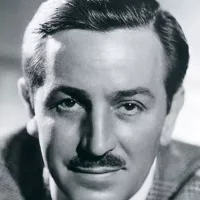
Walter Elias Disney was a highly influential American animator film...
California is a U S state on the Pacific Coast...

The stock market serves as a platform where buyers and...
Trending

7 days ago Josh Hart shines with increased workload, making a case to stay in lineup.
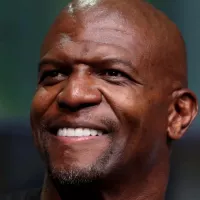
6 months ago Terry Crews Celebrates 36 Years of Marriage; Ranks Worst Brooklyn Nine-Nine Episodes
7 months ago Warren Buffett's Successor Approved; Berkshire Hathaway Stock Affected; Omaha Reacts to Leadership Change
Tony Danza is an American actor and former professional boxer best known for his roles in the popular television sitcoms...
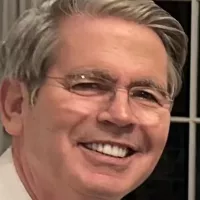
16 days ago Scott Bessent Predicts Oil Price Drop Contingent on Venezuelan Events; Gas Prices Impacted.
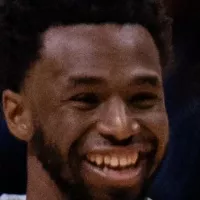
6 days ago Andrew Wiggins shines as Heat realize Warriors' insight; masters portion control.
Popular
Matt and Ross Duffer known as the Duffer Brothers are...

Candace Owens is an American conservative political commentator and author...

Ilhan Omar is an American politician currently serving as the...

XXXTentacion born Jahseh Dwayne Ricardo Onfroy was a controversial yet...

Tom Cotton is an American politician and Army veteran currently...
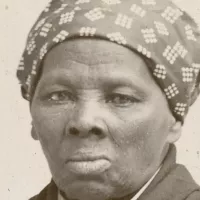
Harriet Tubman was a pivotal American abolitionist and social activist...
